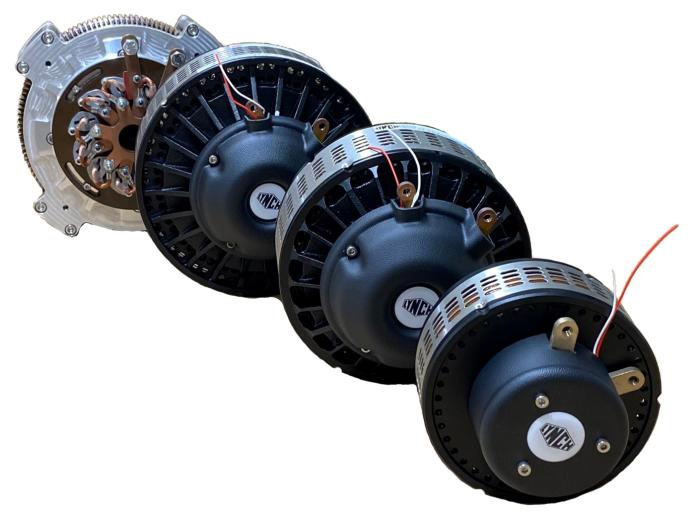
Electric vehicles are more popular than ever before. As more and more people embrace the concept of green transportation, informed consumers want to know more about electric motors to ensure that they find the best fit for their application, whether it’s an electric boat motor, an electric bike motor, or an electric motor for an industrial machine.
There are many types of electric motors, Lynch produces a Disc Armature design which are generally cheaper to produce, simpler to control and more efficient than most other types of electric motors using less material.
Lynch Motor Company Ltd. have been manufacturing brushed DC electric motor solutions since 1990. We are the pioneers in developing electric and hybrid motor solutions. Our UK built, brushed DC electric motor is more efficient, durable and more powerful than most alternative systems, and delivers a reliable and cost-effective solution for electric and hybrid movement of vehicles and heavy objects.
But how exactly does the Lynch brushed electric motor work?
A Permanent Magnet brushed electric motor operates on the principles of electromagnetism and consists of several key components: the stator, the rotor (also known as the armature), the commutator, and brushes.
When an electric current passes through the rotor, it generates a magnetic field around the rotor. This field interacts with the magnetic field of the stator. Due to the interaction between the magnetic fields of the stator and the rotor, a torque (rotational force) is produced on the rotor, causing it to turn.
As the rotor turns, the commutator segments also rotate. The brushes, which are in contact with the commutator, switch the direction of the current in the rotor windings at precisely the right moment. This switching ensures that the torque direction remains consistent, allowing for continuous rotation. As the rotor continues to turn, the process repeats. The brushes continually slide over the commutator segments, reversing the current direction every half turn, and maintaining the rotor's rotation.
In essence, a brushed electric motor converts electrical energy into mechanical energy through the interaction of magnetic fields. The commutator and brushes work together to ensure the rotor keeps turning in one direction by continuously reversing the current direction in the rotor windings at the appropriate moments.
The Lynch Motor brushed electric motor is a robustly engineered celebrated for its simplicity, high torque, and ease of use and suitable for use in many applications. Over the past 34 years, we have worked with our clients closely on projects and applications across a huge variety of sectors including marine, industrial, robotics, military and many more, to generate movement efficiently.
